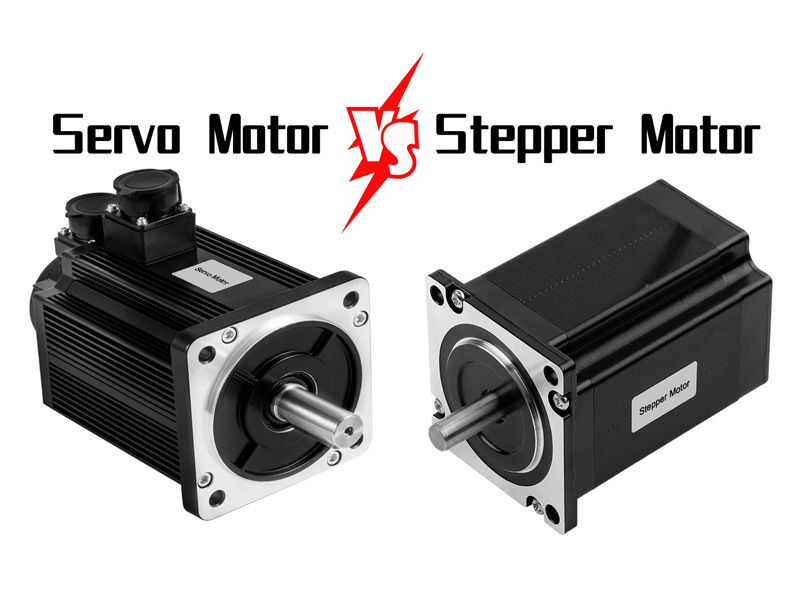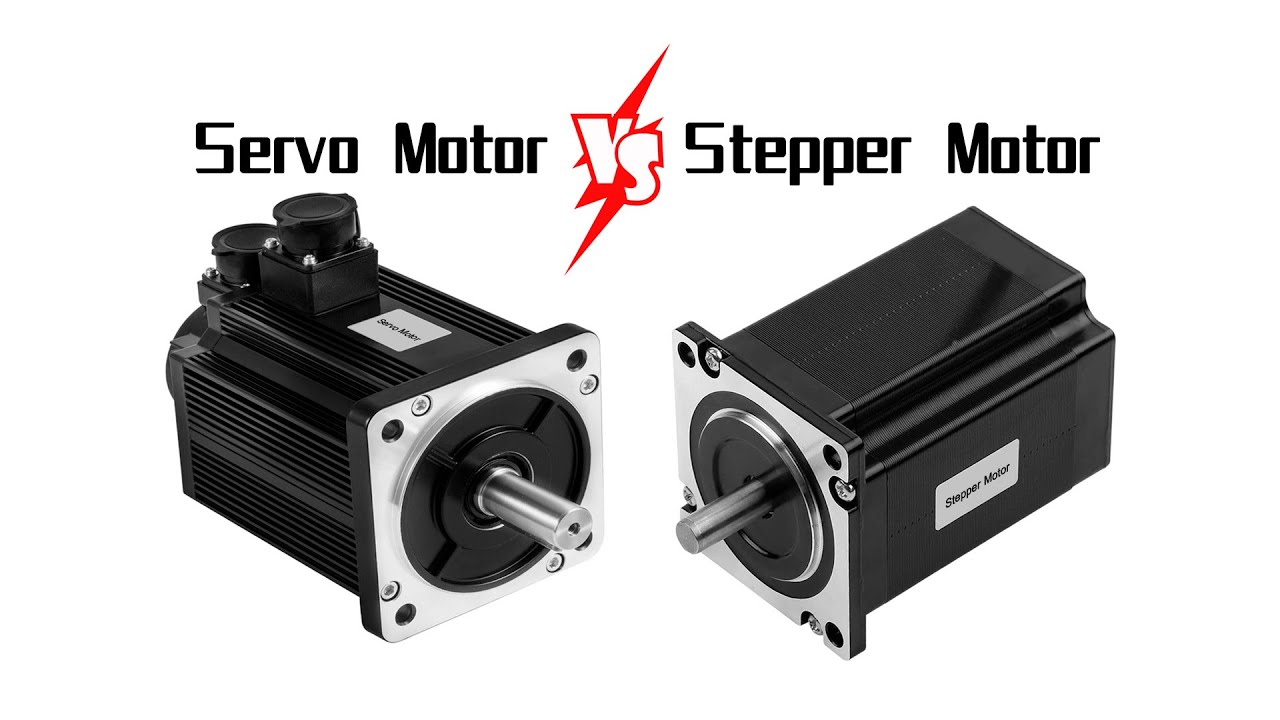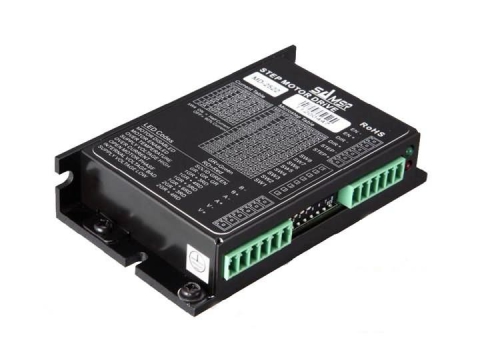Servo motors are used as actuators in the control system for CNC machines to convert the received electrical signals into angular displacement or angular velocity output on the motor shaft. The rotor inside the servo motor is a permanent magnet. The U/V/W three-phase electricity controlled by the driver forms an electromagnetic field. The rotor rotates under the action of this magnetic field. At the same time, the encoder of the motor feeds back the signal to the driver, and the driver compares the target with the feedback value. The values are compared, and the angle of rotation of the rotor is adjusted.

The accuracy of the servo motor is determined by the accuracy of the encoder, that is to say, the servo motor itself has the function of sending pulses. It will send out a corresponding number of pulses every time it rotates one angle, so that the pulses of the servo drive and the servo motor encoder form a response. So it is closed loop control.
Stepper motor is an open-loop control element stepper motor device that converts electrical pulse signals into angular displacement or linear displacement. In the case of non-overload, the motor speed and stop position only depend on the frequency of the pulse signal and the number of pulses, and not affected by load changes.
When the stepper driver receives a pulse signal, it drives the stepper motor to rotate a fixed angle in the set direction, which is called the "step angle". Stepping can control the angular displacement by controlling the number of pulses, so as to achieve the purpose of accurate positioning. It can also control the speed and acceleration of the motor rotation by controlling the pulse frequency of the driver, so as to achieve the purpose of high speed. Therefore, the stepper motor is open-loop control.
The Difference Between Stepper Motors And Servo Motors
Controller
The stepper motor controller is an electronic product that can send out uniform pulse signals. After the signal sent by it enters the stepper motor driver, it will be converted by the driver into the strong current signal required by the stepper motor to drive the stepper motor to run. The stepper motor controller can accurately control the stepper motor to rotate through every angle. What the driver receives is a pulse signal. Every time it receives a pulse, the driver will give the motor a pulse to turn the motor through a fixed angle. Because of this feature, stepper motors are widely used in various industries today.
A servo motor controller is a controller used to control a servo motor. Its function is similar to that of a frequency converter acting on an ordinary AC motor. It is a part of the servo system and is mainly used in high-precision positioning systems. Generally, the servo motor is controlled through three ways of position, speed and torque to achieve high-precision transmission system positioning. It is currently a high-end product of transmission technology.
Control Accuracy
The more phases and beats of the stepper motor, the higher its accuracy. The servo motor is based on the built-in encoder. The more scale the encoder has, the higher the accuracy.
Control Methods
One is open-loop control and the other is closed-loop control.
Low-frequency Characteristics
Stepper motors are prone to low-frequency vibration at low speeds. Generally, damping or subdivision technology is used to overcome low-frequency vibrations, while servo motors will not vibrate at low speeds. The AC servo system has a resonance suppression function, which can cover the lack of rigidity of the CNC machine, and the system has a frequency analysis function (FFT) inside the system, which can detect the resonance point of the CNC machine to facilitate system adjustment.
Torque Frequency Characteristics
The output torque of the stepper motor will decrease with the increase of the speed, and the AC servo motor has a constant torque output.
Overload Capacity
Stepper motors do not have overload capacity, while AC motors have stronger overload capacity.
Operating Performance
The stepper motor adopts open-loop control. If the starting frequency is too high or the load is too large, it is easy to lose steps or stall. When the speed is too high, it is easy to overshoot. The servo system is closed-loop control. The drive can directly sample the feedback signal of the motor encoder. The position loop and the speed loop are formed inside. Generally, there will be no step loss or overshoot of the stepper motor, and the control performance is more reliable.
Speed Response Performance
It takes hundreds of milliseconds for a stepper motor to accelerate from a standstill to a working speed, while the AC servo system has better acceleration performance, generally only a few milliseconds, and can be used in control situations that require fast start and stop.
AC servo system is superior to stepper motor in many performance aspects. However, stepper motors are often used as executive motors in some less demanding occasions. Therefore, in the design process of the control system, various factors such as control requirements and cost should be considered comprehensively, and a suitable control motor should be selected.

